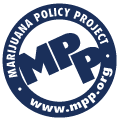|
We Update Daily!
 Custom Search Custom Search
Chris S. Kenoyer. Owner
MMJ Patient, Medical Activist, Online Patients Advocate,
Online MMJ News Journalist
My Personal Medical Bio
Follow Us Now On Twitter
@MedicalMMJMan
Or Follow Us Now
On Facebook
Email Us Here
olpwebs@yahoo.com
Or Email Us Securely Here
MedicalMMJMan@countermail.com
NEW 100% Encrypted Email Server
OLP’s Free MMJ News EList
Get The Latest In MMJ News
All Press Contact Info For Us!
Is CBD? A Possible Cure For
Breast Cancer..? And All The Other
Many Forms & Types Of Cancer..?
Learn More About " CBD" Here
***************************
Advertise Here On OnlinePot
Rates As Low As $50 a Year
24/7 – 365 Days A Year Of Sales!
***********************************
Website Navigational Links
Main Start Page 2
**************************
Latest Marijuana News Reports
*********************************
Parody’s Cartoons US
Government Grown Pot,
Term Papers, School
Reports, & Thesis’s On
Marijuana & Cannabis
*********************************
Amsterdam A to Z
********************************
Canadian Marijuana Websites
*******************************
Church’s & Pot Cannabis
*****************************
Co-Ops, Clinics, Dispensary’s
*****************************
Marijuana Doctors & Clinics
****************************
Pot Cooking Recipes
****************************
Drug Testing A To Z
***************************
Pot Games
****************************
Pot Songs Video’s
****************************
100’s Of Grow Guides
***************************
Hash A- Z
***************************
Cannabis Legal Info, Drug
Lawyers, State, Federal Laws,
State & Supreme Court Rulings
**********************
POW’s Of The MMJ War!
*****************************
Other Marijuana Websites
Websites Link Exchange!
****************************
Medical Marijuana Studies,
Research Report’s, Medical
Cannabis Clinic Study’s
****************************
Parody’s & Cartoons
When We All Need A Good Laugh!
****************************
Avoiding Online MOM Scammers
Newly Re-Updated Info!
*****************************
The Politics Of Contraband
Medical Marijuana In The Mail?
******************************
The Hall Of Shame Section
The Online MOM Scammers
*****************************
Online MOM Providers Ads
****************************
Politicians & Voters Rights
****************************
Medical Marijuana, Strains
****************************
The OG Marijuana Strain Guide
****************************
800+ FAQ Growing Questions
****************************
Patients Spiritual Guidance,
Free Online Crisis Help Center
****************************
Online Marijuana Seed Banks
****************************
Maximum Security Section
Just Updated!
*****************************
Traveling Tips, Guides, B & B’s
****************************
Vaporizers A To Z
*****************************
Online Pot Video’s & Movies
**********************************************
Please Visit Our Sister Websites!
Maine Patients Coalition.org
Reefer Madness Teaching
Museum.org
Listen Right Here Online!
To Original 1930-1950’s
Reefer Madness Propaganda
Radio Shows And Programs
Before TV There Were
"Radio Stars"



*********************************
Legal Disclaimer
Guest Book
Translate Text or Web Page Go To:
Language Tools Google Translations
Article Submissions & News
Reports Are Always Gladly
Accepted Here.

1999-2013 Copyright ©
All Rights Reserved.
No part of this site maybe used or
reproduced in whole or in part
without the written consent of the
Copyright Owner
www.onlinepot.org
OnlinePot assumes no legal liability for any products, or information or
news posted, services offered, Or
any contests or give away’s offered.
|
|
Marijuana & Hemp The Untold Story!
"It would be unreasonable, arbitrary and capricious for DEA to continue to stand
between those sufferers and the benefits of this substance" 1998
-DEA Judge Francis Young
Return To OnlinePot’s Legal Section Main Page
MARIJUANA AND HEMP "The Untold Story"
The purpose of this article (a 20-minute read) is to expose the numerous facts about marijuana and hemp
that have been suppressed–facts the government does not want you to know.
Author: Thomas J. Bouril, 1997
INTRODUCTION
Hemp is a plant that can be used to produce thousands of products. Hemp is of the same plant species that produces marijuana; its scientific name is Cannabis Sativa. Hemp has been used for thousands of years to produce products like paper, textiles, oil, rope, and canvas. In fact, the name canvas is derived from the Arabic word meaning cannabis. Hemp grown for industrial use is very low in THC (the psychoactive chemical in marijuana), thus making industrial hemp useless as a drug. Although marijuana is mostly known as a recreational drug, marijuana also has many medicinal uses.
During the 1930s, the American media propagated numerous false stories depicting marijuana as an extremely dangerous drug. Because these lies went unchallenged, marijuana and hemp were effectively banned in 1938. Recently, hemp has been rediscovered as a natural resource that has great economic and environmental potential. Marijuana for medicinal use is also gaining renewed recognition. Ironically, as will be explained shortly, it is possible that the real reason marijuana was banned was to prevent hemp from ever becoming a major natural resource. What follows are many astonishing facts about marijuana and hemp–facts that will shock most people.
HEMP: THE WORLD’S MOST BENEFICIAL NATURAL RESOURCE? AMAZING FACTS ABOUT AN AMAZING PLANT
-
On an annual basis, 1 acre of hemp will produce as much fiber as 2 to 3 acres of cotton. Hemp fiber is stronger and softer than cotton, lasts twice as long as cotton, and will not mildew. Many textile products (shirts, jackets, pants, backpacks, etc.) made from 100% hemp are now available.
-
Cotton grows only in moderate climates and requires more water than hemp; but hemp is frost tolerant, requires only moderate amounts of water, and grows in all 50 states. Cotton requires large quantities of pesticides and herbicides–50% of the world’s pesticides/herbicides are used on cotton. But hemp requires no pesticides, no herbicides, and only moderate amounts of fertilizer.
-
On an annual basis, 1 acre of hemp will produce as much paper as 2 to 4 acres of trees. From tissue paper to cardboard, all types of paper products can be produced from hemp. Global demand for paper will double within 25 years. Unless tree-free sources of paper are developed, there is no way to meet future demand without causing massive deforestation and environmental damage. Hemp is the world’s most promising source of tree-free paper.
-
The quality of hemp paper is superior to tree-based paper. Hemp paper will last hundreds of years without degrading, can be recycled many more times than tree-based paper, and requires less toxic chemicals in the manufacturing process than does paper made from trees.
-
Hemp can be used to produce fiberboard that is stronger than wood, lighter than wood, and fire retardant. Substituting hemp fiberboard for timber would further reduce the need to cut down our forests. Hemp can also be used to produce strong, durable and environmentally-friendly plastic substitutes. Thousands of products made from petroleum-based plastics can be produced from hemp-based composites. Mercedes Benz of Germany has recently begun manufacturing automobile bodies and dashboards made from hemp.
-
It takes years for trees to grow until they can be harvested for paper or wood, but hemp is ready for harvesting only 120 days after it is planted. Hemp can grow on most land suitable for farming, but forests and tree farms require large tracts of land available in few locations. Harvesting hemp rather than trees would also eliminate erosion due to logging, thereby reducing topsoil loss and water pollution caused by soil runoff.
-
Hemp seeds contain a protein that is more nutritious and more economical to produce than soybean protein. Hemp seeds are not intoxicating. Hemp seed protein can be used to produce virtually any product made from soybean: tofu, veggie burgers, butter, cheese, salad oils, ice cream, milk, etc. Hemp seed can also be ground into a nutritious flour that can be used to produce baked goods such as pasta, cookies, and breads.
-
Hemp seed oil can be used to produce non-toxic diesel fuel, paint, varnish, detergent, ink and lubricating oil. Because hemp seeds account for up to half the weight of a mature hemp plant, hemp seed is a viable source for these products.
-
Just as corn can be converted into clean-burning ethanol fuel, so can hemp. Because hemp produces more biomass than any plant species (including corn) that can be grown in a wide range of climates and locations, hemp has great potential to become a major source of ethanol fuel.
-
Literally millions of wild hemp plants currently grow throughout the U.S. Wild hemp, like hemp grown for industrial use, has no drug properties because of its low THC content. U.S. marijuana laws prevent farmers from growing the same hemp plant that proliferates in nature by the millions.
-
From 1776 to 1937, hemp was a major American crop and textiles made from hemp were common. Yet, The American Textile Museum, The Smithsonian Institute, and most American history books contain no mention of hemp. The government’s War on Marijuana Smokers has created an atmosphere of self censorship–speaking of hemp in a positive manner is considered taboo.
-
United States Presidents George Washington and Thomas Jefferson grew hemp, used products made from hemp, and praised the hemp plant in some of their writings. Under the laws written by today’s politicians, George Washington and Thomas Jefferson would be considered a threat to society–they would be arrested and thrown in prison for the felony crime of growing plants.
-
No other natural resource offers the potential of hemp. Cannabis Hemp is capable of producing significant quantities of paer, textiles, building materials, food, medicine, paint, detergent, varnish, oil, ink, and fuel. Unlike other crops, hemp can grow in most climates and on most farmland throughout the world with moderate water and fertilizer requirements, no pesticides, and no herbicides. Cannabis Hemp (also known as Indian Hemp) has enormous potential to become a major natural resource that can benefit both the economy and the environment.
"Make the most you can of the Indian Hemp seed and sow it everywhere."
–President George Washington, 1794
During World War II, the U.S. government urged patriotic American farmers to grow…
HEMP FOR VICTORY
Fibers needed to make rope, textiles and other materials were in such short supply during World War II, the U.S. government temporarily re-legalized hemp cultivation so American farmers could grow it for the war effort. Although the government allowed more than 350,000 acres (550 square miles) of hemp to be cultivated during World War II, the U.S. experienced no increase in marijuana use during that period.
The 1942 U.S. Dept. of Agriculture film titled Hemp For Victory, which was used to educate American farmers about growing hemp for the war effort. This film portrays the hemp plant in a very positive light. For years the government denied it made this film, and records of its existence in The Library of Congress were mysteriously missing. But in 1989, after an exhaustive search of government archives, researchers uncovered the original library records which prove Hemp For Victory was produced by the U.S. government. Video cassette tapes of Hemp For Victory are now available for sale to the public.
DO HEMP ADVOCATES HAVE AN AGENDA TO RE-LEGALIZE MARIJUANA?
|
Many prohibitionists discredit the need for a hemp industry because they fear hemp is being used as a vehicle to re-legalize marijuana. The facts must be judged on their own merit. The economic and environmental benefits of hemp are very real. There are literally thousands of American farmers who want to grow industrial hemp. The repeal of Hemp Prohibition is also advocated by numerous major farm organizations, including the conservative 4.5-million-member American Farm Bureau. Many businesses are now producing hemp-based products and some large American corporations (e.g., International Paper, Inc.) are beginning to advocate the repeal of Hemp Prohibition.
It is entirely possible to repeal Hemp Prohibition without re-legalizing marijuana because hemp grown for industrial use has no drug properties. China and Eastern European nations are the world’s leading growers of hemp, but marijuana is still illegal in those nations. Although marijuana is illegal in Canada, England, Germany, and Australia, those nations have recently begun growing hemp for the first time in decades. If the United States does not repeal Hemp Prohibition, a significant economic and environmental opportunity will be lost–the benefits will be reaped only by America’s economic competitors.
MARIJUANA AS MEDICINE: FACTS THE GOVERNMENT IGNORES
The DEA (Drug Enforcement Administration) classifies marijuana as a dangerous drug with no medical value. That classification contradicts mounds of evidence showing marijuana to be a very safe and effective medicine. Marijuana is more effective, much less expensive, and much safer than many drugs currently used in its place. Marijuana can provide excellent relief for those who suffer from cancer, AIDS, glaucoma, multiple sclerosis, chronic pain, arthritis, rheumatism, asthma, insomnia, and depression. If knowledge of marijuana’s many medicinal uses, its remarkable safety, and hemp’s enormous potential as a natural resource become widely known, the DEA fears that support for Marijuana Prohibition will collapse, and thus threaten the DEA’s budget. To maintain the myth that marijuana/hemp is useless and dangerous, the DEA prohibits medicinal use of marijuana, denies researchers access to marijuana for use in clinical studies, and rejects all applications to grow industrial hemp. In 1988–after reviewing all evidence brought forth in a lawsuit against the government’s prohibition of medical marijuana–the DEA’s own administrative law judge (Judge Francis Young) wrote:
"The evidence in this record clearly shows that marijuana has been accepted as capable of relieving the distress of great numbers of very ill people, and doing so with safety under medical supervision. It would be unreasonable, arbitrary and capricious for the Drug Enforcement Administration to continue to stand between those sufferers and the benefits of this substance in light of the evidence." Judge Francis Young of the Drug Enforcement Administration went on to say:
"Marijuana, in its natural form, is one of the safest therapeutically active substances known. In strict medical terms, marijuana is safer than many foods we commonly consume." Judge Young recommended that the DEA allow marijuana to be prescribed as medicine, but the DEA has refused.
Although the federal government claims marijuana has no appropriate medicinal use, the federal government contradicts itself by supplying government-grown, FDA-approved marijuana cigarettes to 8 seriously ill Americans remaining from its discontinued medical marijuana program. The federal government closed its medical marijuana program in 1992 after the AIDS epidemic created a flood of new applicants. In November 1996, California voters approved an initiative Proposition 215 that re-legalizes the personal use and cultivation of marijuana for medicinal purposes.
MARIJUANA/HEMP WAS LEGAL, WHY WAS IT BANNED?
For the first 162 years of America’s existence, marijuana was totally legal and hemp was a common crop. But during the 1930s, the U.S. government and the media began spreading outrageous lies about marijuana, which led to its prohibition. Some headlines made about marijuana in the 1930s were: "Marijuana: The assassin of youth." "Marijuana: The devil’s weed with roots in hell." "Marijuana makes fiends of boys in 30 days." "If the hideous monster Frankenstein came face to face with the monster marijuana, he would drop dead of fright." In 1936, the liquor industry funded the infamous movie titled Reefer Madness. This movie depicts a man going insane from smoking marijuana, and then killing his entire family with an ax. This campaign of lies, as well as other evidence, have led many to believe there may have been a hidden agenda behind Marijuana Prohibition.
Shortly before marijuana was banned by The Marijuana Tax Act of 1937, new technologies were developed that made hemp a potential competitor with the newly-founded synthetic fiber and plastics industries. Hemp’s potential for producing paper also posed a threat to the timber industry (see New Billion-Dollar Crop). Evidence suggests that commercial interests having much to lose from hemp competition helped propagate reefer madness hysteria, and used their influence to lobby for Marijuana Prohibition. It is not known for certain if special interests conspired to destroy the hemp industry via Marijuana Prohibition, but enough evidence exists to raise the possibility.
After Alcohol Prohibition ended in 1933, funding for the Federal Bureau of Narcotics (now the Drug Enforcement Administration) was reduced. The FBN’s own director, Harry J. Anslinger, then became a leading advocate of Marijuana Prohibition. In 1937 Anslinger testified before Congress in favor of Marijuana Prohibition by saying: "Marijuana is the most violence causing drug in the history of mankind." "Most marijuana smokers are Negroes, Hispanics, Filipinos and entertainers. Their Satanic music, jazz and swing, result from marijuana usage. This marijuana causes white women to seek sexual relations with Negroes." Marijuana Prohibition is founded on lies and rooted in racism, prejudice, and ignorance. Just as politicians believed Harry J. Anslinger to be a marijuana expert in 1937, many people still believe law enforcement officials are marijuana experts. In reality, law enforcement officials have no expert knowledge of marijuana’s medical or health effects, but they do represent an industry that receives billions of tax dollars to enforce Marijuana Prohibition.
Before the government began promoting reefer madness hysteria during the 1930s, the word marijuana was a Mexican word that was totally absent from the American vocabulary. In the 1930s, Americans knew that hemp was a common, useful, and harmless crop. It is extremely unlikely anyone would have believed hemp was dangerous, or would have believed stories of hemp madness. Thus, the words marijuana and reefer were substituted for the word hemp in order to frighten the public into supporting Hemp Prohibition. Very few people realized that marijuana and hemp came from the same plant species; thus, virtually nobody knew that Marijuana Prohibition would destroy the hemp industry.
Bolstering the theory that marijuana was banned to destroy the hemp industry, two articles were written on the eve of Marijuana Prohibition that claim hemp was on the verge of becoming a super crop. These articles appeared in two well-respected magazines that are still published today. The articles are:
Flax and Hemp (Mechanical Engineering, Feb. 1937)
New Billion-Dollar Crop (Popular Mechanics, Feb. 1938)
This was the first time that billion dollar was used to describe the value of a crop. These articles praise the usefulness and potential of hemp by stating "hemp can be used to produce more than 25,000 products" and "hemp will prove, for both farmer and public, the most profitable and desirable crop that can be grown." Marijuana Prohibition took effect within one year after both these articles were written.
MARIJUANA MYTHS
Myth: Today’s marijuana is more potent and more harmful than it was many years ago.
Fact: There is no medical evidence that shows high-potency marijuana is more harmful than low-potency marijuana. Marijuana is literally one of the least toxic substances known. High-potency marijuana is actually preferable because less is of it consumed to obtain the desired effect; thereby reducing the amount of smoke that enters the lungs and lowering the risk of any respiratory health hazards. Claiming that high-potency marijuana is more harmful than low-potency marijuana is like claiming wine is more harmful than beer.
Myth: Smoking marijuana can cause cancer and serious lung damage.
Fact: There chance of contracting cancer from smoking marijuana is minuscule. Tobacco smokers typically smoke 20+ cigarettes every day for decades, but virtually nobody smokes marijuana in the quantity and frequency required to cause cancer. A 1997 UCLA study (see page 9) concluded that even prolonged and heavy marijuana smoking causes no serious lung damage. Cancer risks from common foods (meat, salt, dairy products) far exceed any cancer risk posed by smoking marijuana. Respiratory health hazards and cancer risks can be totally eliminated by ingesting marijuana in baked foods.
Myth: Marijuana contains over 400 chemicals, thus proving that marijuana is dangerous.
Fact: Coffee contains 1,500 chemicals. Rat poison contains only 30 chemicals. Many vegetables contain cancer-causing chemicals. There is no correlation between the number of chemicals a substance contains and its toxicity. Prohibitionists often cite this misleading statistic to make marijuana appear dangerous.
Myth: Marijuana is a gateway drug–it leads to harder drugs.
Fact: The U.S. government’s own statistics show that over 75 percent of all Americans who use marijuana never use harder drugs. The gateway-drug theory is derived by using blatantly-flawed logic. Using such blatantly-flawed logic, alcohol should be considered the gateway drug because most cocaine and heroin addicts began their drug use with beer or wine–not marijuana.
Myth: Marijuana is addicting.
Fact: Marijuana is not physically addicting. Medical studies rank marijuana as less habit forming than caffeine. The legal drugs of tobacco (nicotine) and alcohol can be as addicting as heroin or cocaine, but marijuana is one of the least habit forming substances known.
Myth: Marijuana use impairs learning ability.
Fact: A 1996 U.S. government study claims that heavy marijuana use may impair learning ability. The key words are heavy use and may. This claim is based on studying people who use marijuana daily–a sample that represents less than 1 percent of all marijuana users. This study concluded: 1) Learning impairments cited were subtle, minimal, and may be temporary. In other words, there is little evidence that such learning impairments even exist. 2) Long-term memory was not affected by heavy marijuana use. 3) Casual marijuana users showed no signs of impaired learning. 4) Heavy alcohol use was cited as being more detrimental to the thought and learning process than heavy marijuana use.
Myth: Marijuana is a significant cause of emergency room admissions.
Fact: The U.S. government reports that marijuana-related emergency room episodes are increasing. The government counts an emergency room admission as a marijuana-related episode if the word marijuana appears anywhere in the medical record. If a patient tests positive for marijuana because he/she used marijuana several days before the incident occurred, if a drunk driver admits he/she also smoked some marijuana, or if anyone involved in the incident merely possessed marijuana, the government counts the emergency room admission as a "marijuana-related episode." Less than 0.2% of all emergency room admissions are "marijuana related." This so-called marijuana-causes-emergencies statistic was carefully crafted by the government to make marijuana appear dangerous.
Myth: Smoking marijuana can cause cancer and serious lung damage.
Fact: There chance of contracting cancer from smoking marijuana is minuscule. Tobacco smokers typically smoke 20+ cigarettes every day for decades, but virtually nobody smokes marijuana in the quantity and frequency required to cause cancer. A 1997 UCLA study (see page 9) concluded that even prolonged and hea
DOES PROHIBITION CAUSE MORE HARM THAN MARIJUANA?
Recently, narcotics officers raided the house of a suspected marijuana dealer in Wisconsin. The unarmed suspect, who offered no resistance, was shot to death in front of his 7-year-old son. His crime? Possession of 1 ounce of marijuana. In Oklahoma, a wheelchair-bound paraplegic who used medicinal marijuana to control muscle spasms caused by his broken back was sentenced to 10 years in prison. His crime? Possession of 2 ounces of marijuana. Another Oklahoma man is serving 75 years in prison for growing only 5 marijuana plants. (These are not misprints.)
Prohibition is the number one cause of America’s exploding prison population. Many non-violent drug offenders are now serving longer prison sentences than murderers, rapists, and other violent criminals. It costs taxpayers $30,000 per year to imprison just one non-violent drug offender. Politicians are spending billions of tax dollars to build new prisons and jails so more and more non-violent drug offenders can be warehoused. Meanwhile, funding for education and other services are being strained.
Reducing drug abuse is a desirable goal, but law enforcement methods used to obtain that goal are counterproductive. Prohibition costs billions to enforce, creates a black market that generates violence and corruption, and makes criminals out of millions of productive and harmless adults. Adult use of alcohol and tobacco is accepted, but adult use of marijuana is considered criminal behavior. Why?
The main rationalization for Prohibition is to keep marijuana away from children. That rationalization does not reflect reality. Several surveys reveal that teenagers can obtain marijuana easier than they can obtain the legal drugs of beer or wine. In Holland, where sale of marijuana to adults is openly accepted, the percentage of teenagers using marijuana is less than half that of American teenagers. Because America’s marijuana trade is totally unregulated, marijuana dealers are on the streets selling to anybody–especially teenagers. Regulating marijuana like wine would put street dealers out of business, would make marijuana dealers pay taxes, and would restrict sales to adults only. Prohibition does not make it difficult for teenagers to obtain marijuana. Tougher marijuana laws have not reduced marijuana use. Marijuana use has increasedevery single year since 1991.
In 1937 (the last year that marijuana was legal) only 100,000 Americans used marijuana. Now that marijuana is illegal, 30 million Americans use marijuana, and marijuana is easily available to anybody who wants it–including children and prison inmates. 600,000 Americans are arrested for marijuana violations every year and thousands of them are sent to jail or prison, where many of them can still obtain drugs. The government can’t even keep drugs out of its own prisons, yet the politicians keep telling us they can rid the entire nation of marijuana by spending more tax dollars. The government now spends $15 billion every year (a 1,500% increase since 1980) waging a war on marijuana smokers–a war that has lasted 60 years and is impossible to win. Another $5 billion per year is lost in tax revenue that could be generated if marijuana was regulated and taxed like wine.
For all practical purposes, Marijuana Prohibition is a $15-billion-per-year government subsidy for drug traffickers, organized crime, and street dealers. Because the government prohibits well-regulated liquor stores from selling marijuana, the government ensures that organized crime and street dealers will flourish. Prohibition escalates violence and corruption as mobsters, street gangs, and thugs fight for control of the marijuana trade. Just as Alcohol Prohibition escalated violence and corruption during the 1920s, Marijuana Prohibition does the same today.
Once all the facts are known, it becomes clear that America’s marijuana laws need reform. This issue must be openly debated using only the facts. Groundless claims, meaningless statistics, and exaggerated scare stories that have been peddled by politicians and prohibitionists for the last 60 years must be rejected.
HOW HARMFUL IS MARIJUANA?
ANNUAL AMERICAN DEATHS CAUSED BY DRUGS
TOBACCO ........................ 400,000 ALCOHOL ........................ 100,000 ALL LEGAL DRUGS ................ 20,000 ALL ILLEGAL DRUGS .............. 15,000 CAFFEINE ....................... 2,000 ASPIRIN ........................ 500 MARIJUANA ...................... 0 ---------------------------------------- Source: United States government... National Institute on Drug Abuse, Bureau of Mortality Statistics
Like any substance, marijuana can be abused. The most common problem attributed to marijuana is frequent overuse, which can induce lethargic behavior, but does not cause serious health problems. Marijuana can cause short-term memory loss, but only while under the influence. Marijuana does not impair long-term memory. Marijuana does not lead to harder drugs. Marijuana does not cause brain damage, genetic damage, or damage the immune system. Unlike alcohol, marijuana does not kill brain cells or induce violent behavior. Continuous long-term smoking of marijuana can cause bronchitis, but the chance of contracting bronchitis from casual marijuana smoking is minuscule. Respiratory health hazards can be totally eliminated by consuming marijuana via non-smoking methods, i.e., ingesting marijuana via baked foods, tincture, or vaporizer.
A 1997 UCLA School of Medicine study (Volume 155 of the American Journal of Respiratory & Critical Care Medicine) conducted on 243 marijuana smokers over an 8-year period reported the following: "Findings from the long-term study of heavy, habitual marijuana smokers argue against the concept that continuing heavy use of marijuana is a significant risk factor for the development of chronic lung disease." "Neither the continuing nor the intermittent marijuana smokers exhibited any significantly different rates of decline in lung function as compared with those individuals who never smoked marijuana." The study concluded: "No differences were noted between even quite heavy marijuana smoking and nonsmoking of marijuana."
Marijuana does not cause serious health problems like those caused by tobacco or alcohol (e.g., strong addiction, cancer, heart problems, birth defects, emphysema, liver damage, etc.). Death from a marijuana overdose is impossible. In all of world history, there has never been a single human death attributed to a health problem caused by marijuana.
HEMP DIRECTORY INDEX
INTERNET LINKS
BOOKS AND VIDEOS
ACTIVIST ORGANIZATIONS
PUBLICATIONS
HEMP PRODUCTS
INTERNET LINKS
For detailed information on the health effects of marijuana, medical marijuana, industrial hemp, activist organizations, businesses that sell hemp products, the history of marijuana and hemp, and the government’s War on Marijuana Smokers, visit the following Web sites.
Marijuana Links (http://www.calyx.net/marijuana.html)
CANNABIS.COM (http://www.cannabis.com)
Drug Policy Foundation (http://www.dpf.org)
Drug Library (http://www.druglibrary.org)
Ecolution (http://www.ecolution.com)
Hemp BC (http://www.hempbc.com)
Hempen Ale–America’s 1st Hemp Beer http://www.hempenale.com)
Hempstead Company (http://www.hempstead.com) Hempy’s (http://www.hempys.com)
North American Industrial Hemp Council (http://www.naihc.org)
PUBLICATIONS
Cannabis Canada Magazine
#504-21 Water St.
Vancouver, BC, Canada V6B-1A1
Phone: (604) 669-9069
Internet: http://www.hempbc.com
HempWorld Magazine
P.O. Box 550
Forestville, CA 95436
Phone: (707) 887-7508
Internet: http://www.hempworld.com
HEMP PRODUCTS
Ecolution
P.O. Box 2279
Merrifield, VA 22116-2279
Phone: (703) 207-9001
Internet: http://www.ecolution.com
Products: 100% hemp clothing (jeans, jackets, shirts, shoes, hats, shorts) and more.
Hempy’s
617 West Grape St
San Diego, CA 92101
Phone: (619) 233-HEMP
Internet: http://www.hempys.com
Products: 100% hemp backbacks, travel bags, clothing, etc.
|
|






 Button Ads!
Button Ads! 





